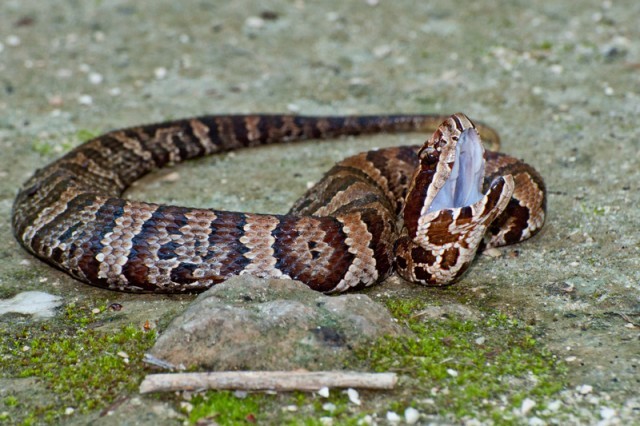Just when you thought being bit by a venomous snake was next to impossible, it can take place. I should know because when I was fifteen-years-old, my dad got bit by a rattlesnake. No, we weren't hiking or bugging out in the woods. He was gardening in our backyard when he came across this baby rattler and before he knew what was happening the snake bit him.
This situation might have been prevented if my dad would have been able to identify the baby rattler, but in his defense baby rattlesnakes are difficult to detect so it's best to proceed with caution around any snake.
You'll learn throughout this article how you can identify an adult snake by its head shape and colors, and besides just knowing what a snake looks like, you should also know how venomous each snake is.
Why is it important to know how dangerous a type of snake is?
Because if you decide to go on a camping trip or hiking and you encounter a snake you're not familiar with, the unthinkable could happen. If you know just how venomous a snake is, it may help you get help faster when you tell the officials what snake bit you.
Venom isn't the only thing you need to worry about if you get bit by a snake.
A snake harbors a lot of bacteria in its mouth, so not only are you dealing with venom but a lot of bacteria that is now in your skin. Infection is yet another reason you should not only be careful around any snake but know exactly which snake you are dealing with.
After the break, you'll learn how to identify a copperhead snake and which areas you may encounter one.
After reading about the copperhead snake, see if you can identify the additional dangerous snakes covered today, because if you ever encounter a venomous snake, hopefully, you'll have enough time to escape narrowly being bit.

Dinner?
Ashley
Best to identify them by dental record during the autopsy lol
Yes, diamond back is delicious.especially when you haven’t had food for awhile!
Good information to have.
After its been beat with a stick, it’s easy , it’s a dead snake.
I have one disagreement. Caught it real quick. The Timber Rattler, it’s not confined to Kansas. Northern East Texas is full of them, Northern Louisiana is full of them , as is Mississippi, Alabama, Georgia, and Eastern Florida..
3-4 ft, .I’ve seen more that were, 6-8 and even 10-12 ft long.
Move to hawaii. No snakes!
Post mortem exam is best.
Kill them all, then there’s nothing to think about.
I’m down with your idea Ben